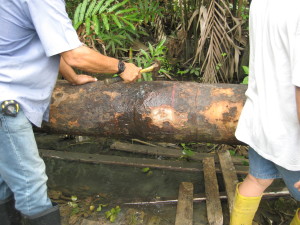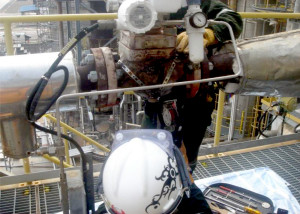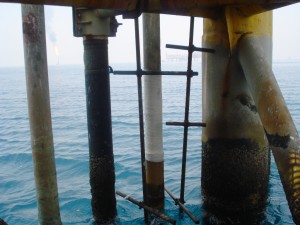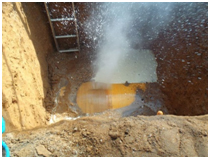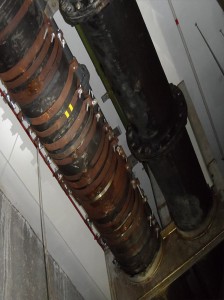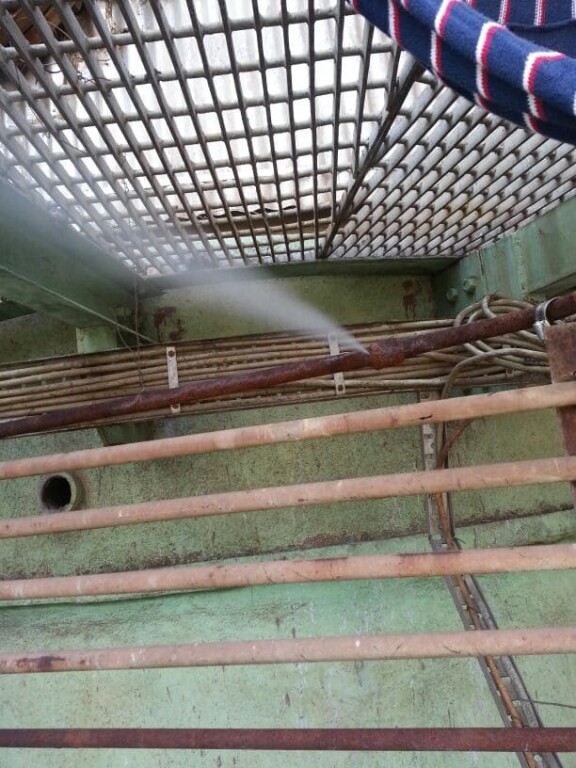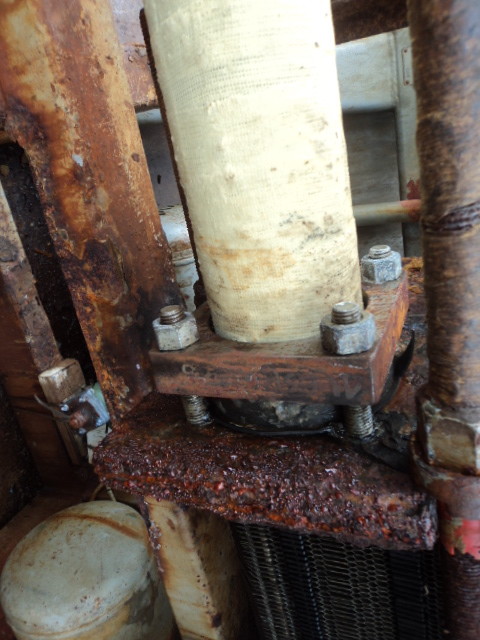
Factors Affecting Lifetime of Corrosion Protection Coatings
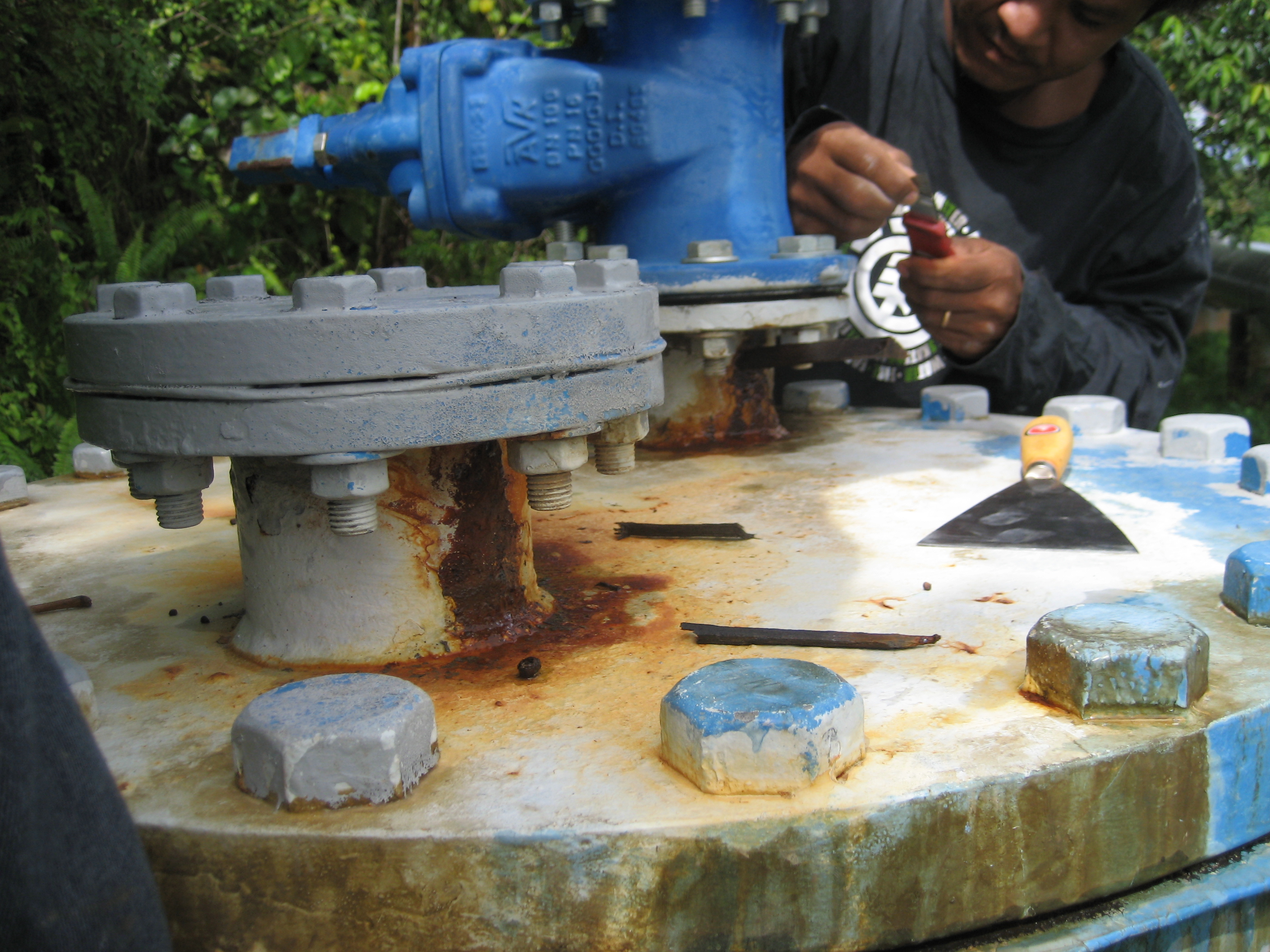
Introduction
For the reasons described in the previous chapter, corrosion requires a ready supply of oxygenated, conducting sea water and somewhere for the corrosion products to form. Anti-corrosion coatings work by firstly excluding water, ions and oxygen from reaching the steel and secondly, by preventing the products of the corrosion reaction from escaping from the reaction site. In the second case, the iron ions saturate the local area and the iron dissolution reaction can no longer proceed. Anti-corrosion Coatings therefore work as a barrier mechanism. It is the efficiency of the barrier that determines the extent of corrosion and coating breakdown.
For a perfectly intact anti-corrosion coating applied to a perfectly clean surface with good surface preparation, the expected lifetime (assuming that there is no mechanical damage to the coating and/or strain applied on the steel substrate due to structural behavior) would probably exceed that of the vessel. It is the deviations from perfection that compromise the lifetime of the anti-corrosion coatings.
Factors affecting lifetime of anti-corrosion coatings
(1) Oxygen permeability
Most anti-corrosion coatings used in the industry are not good barriers to the diffusion of gases. Coatings allow more than sufficient oxygen through the bulk of the anti-corrosion coating to sustain any corrosion reaction taking place at the interface with the metal.
(2) Water vapour permeability
Water in its gaseous phase can generally penetrate anti-corrosion coatings with much the same ease as oxygen. Water vapour then condenses at the metal interface back to liquid water where it can drive such phenomena as osmotic and cold wall blistering. The latter occurs when water vapour passes through the anti-corrosion coating and then condenses on the underlying cold metal. Liquid water cannot return through the anti-corrosion coating and so blisters are formed, usually containing neutral pH fluid. Inward rates of water vapour diffusion are generally higher than outward diffusion rates. The corrosion process is therefore rarely limited by a lack of water availability.
Liquid water uptake
As well as water vapour, anti-corrosion coatings also transmit liquid water, which is taken into the bulk of the coating and (depending on the type of anti-corrosion coating) can cause it to swell, disbond from the metal or to leach soluble components over an extended time period. Cyclic effects can eventually compromise the barrier properties of the anti-corrosion coating.
Ionic permeability
It is usually the availability of aggressive ions such as chlorides or sulfates at the interface that determines the rate of the corrosion reaction. For cross linked anti-corrosion coatings such as epoxy and polyurethane coatings, the network structure prevents the transmission of these ions through the bulk of the anti-corrosion coating. Ions can only reach the interface via pores and defects in the anti-corrosion coatings.
Coating porosity
All anti-corrosion coatings contain pores and other similar defects. These are usually produced during coating application and are a result of air entrapment, solvent boiling, pigment segregation or other similar phenomena. The density and size of the defects can vary with anti-corrosion coating thickness.
The thicker the anti-corrosion coating, the lower the defect concentration and the less the likelihood of pores reaching from the surface to the steel. The chance of a pore penetrating through a single coat system is greater than through a double or multi-coat system of the same total thickness. Pores can penetrate both layers as the pore in the lower layer can act as a nucleation site for the pore in the upper layer.
However, over thickness in an anti-corrosion coating can lead to internal stresses being generated and cracking can occur. Therefore a very thick coating is not necessarily better. The manufacturer’s specified dry film thicknesses (DFT) should be achieved. The final DFT is normally defined by the anti-corrosion coating specifications.
Surface contamination
It is almost impossible to produce a perfectly clean surface in industrial. Surfaces are contaminated with a mixture of ions, water, oils and greases, blasting dusts, soot and other deposits. When the anti-corrosion coating is applied on these contaminants, service lifetime is reduced. Ionic materials cause blistering and other disbonding phenomena whilst the other contaminants result in various degrees of lack of adhesion. The coating manufacturers state the surface cleanliness standards required for each anti-corrosion coating. In particular, the level of ionic contamination must be less than or equal to the test qualification of the anti-corrosion coatings certification. Ionic contamination is usually measured in micrograms of ionic material per square centimeter or milligrams per square meter. It should be noted that there is a factor of ten differences between these two measurement systems.
Surface profile
The roughness of the surface prior to the coating also affects the longevity of anti-corrosion coatings. A good mechanical key is essential for adhesion. The term ‘mechanical key’ describes the surface profile where the abrasive blast media has produced undercut sections of the surface which will allow the anti-corrosion coating to flow into these in the manner of a dovetail. The mechanical key helps to resist rust jacking (and calcareous deposit jacking) together with providing a more circuitous path for the diffusion of water and ions along the interface from defects in the anti-corrosion coating.
